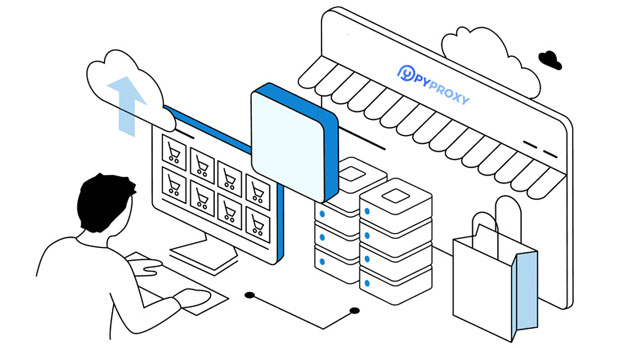In today’s digital world, using a socks5 proxy for online anonymity, security, and geo-unblocking has become increasingly popular. However, with the growing demand for proxies, ensuring the reliability of a Socks5 proxy IP is crucial. A reliable proxy ensures smooth browsing, privacy protection, and access to restricted content, while an unreliable one can compromise security, slow down browsing, or expose you to cyber threats. So, how can you assess whether a Socks5 proxy IP is reliable or not? In this article, we will explore the key factors to consider when evaluating the trustworthiness and performance of a Socks5 proxy IP, including speed, security features, and testing methods. What is a Socks5 Proxy?A Socks5 proxy is an advanced type of proxy that routes internet traffic through a remote server to mask a user’s IP address. Unlike HTTP proxies, which only handle web traffic, socks5 proxies can handle a wider range of protocols, such as FTP, SMTP, and P2P file sharing. This flexibility makes Socks5 proxies highly suitable for various use cases, including secure browsing, online gaming, and bypassing geographical restrictions.However, not all Socks5 proxies are created equal. The quality and reliability of a Socks5 proxy depend on several critical factors, which can vary from one provider to another. Let's dive deeper into how to determine if a Socks5 proxy IP is reliable.Factors to Consider in Determining the Reliability of a Socks5 Proxy IP1. Speed and LatencyOne of the primary reasons people use Socks5 proxies is to maintain privacy while still enjoying fast internet speeds. However, not all proxies are capable of providing the same level of performance. Speed and latency are critical factors when assessing the reliability of a Socks5 proxy.- Latency: Latency refers to the delay between sending a request and receiving a response. A reliable Socks5 proxy should have low latency, ensuring that there are no significant delays while browsing or streaming content. High latency can lead to frustrating delays, negatively affecting user experience.- Speed: Speed is equally important, especially for tasks like streaming, online gaming, or downloading large files. A reliable Socks5 proxy should offer fast connection speeds to ensure seamless online activities. Slower proxies may result in buffering, slower downloads, and delayed web page loading.To assess the speed and latency of a Socks5 proxy, consider using online speed test tools that measure both the download/upload speed and the ping time (latency) from the proxy server to your location. This can give you an idea of how well the proxy performs in real-world conditions.2. Security and EncryptionSecurity is another key factor when determining whether a Socks5 proxy IP is reliable. Since a proxy acts as an intermediary between the user and the internet, it can potentially expose sensitive information if not properly secured. A trustworthy Socks5 proxy should provide robust security features to ensure that your data remains private and protected from third-party interference.- Encryption: Socks5 proxies are generally less secure than HTTPS proxies, as they don't encrypt your data by default. However, some Socks5 proxies come with additional encryption options, such as a secure tunnel or encryption over the connection, to protect data traffic from interception. If privacy and security are critical to your activities, you should ensure the proxy service offers this feature.- Authentication: Reliable Socks5 proxies often provide various authentication methods, such as username/password authentication, to prevent unauthorized access. The more robust the authentication method, the more secure your proxy will be.To ensure security, always check if the Socks5 proxy provider uses any form of encryption, especially if you're dealing with sensitive data or conducting financial transactions online.3. IP Address Pool and RotationThe size and diversity of the proxy provider’s IP address pool are important indicators of reliability. A diverse and large IP pool means that the proxy is less likely to be blocked or flagged by websites, which is especially important for activities like web scraping, bypassing geo-restrictions, or managing multiple accounts.- IP Rotation: A reliable Socks5 proxy service often includes automatic IP rotation, which changes the IP address assigned to you after a certain amount of time or after every request. This helps to maintain anonymity and avoid IP bans.- Geographic Diversity: If you need to access content or services restricted to specific countries, you should look for a Socks5 proxy provider that offers a wide range of IP addresses across multiple regions. This allows you to bypass geographic restrictions more effectively.4. Logging PolicyAnother crucial factor in assessing the reliability of a Socks5 proxy IP is the provider’s logging policy. A proxy service that keeps logs of user activities could compromise your anonymity and security. This is especially true if the proxy service stores personally identifiable information (PII) or traffic logs, which could be handed over to authorities or third parties if requested.- No-logs Policy: A trustworthy Socks5 proxy service should have a strict no-logs policy, ensuring that it does not track or store your online activities. Always verify that the proxy provider is transparent about its logging practices and review any available privacy policies.It’s worth noting that some proxy providers may claim to have a no-logs policy, but it's essential to verify this claim through reviews, third-party audits, or transparency reports to ensure their trustworthiness.5. Customer Support and ReputationCustomer support and overall reputation are often overlooked when evaluating the reliability of a Socks5 proxy IP. However, they play a significant role in ensuring that users have a positive experience. - Customer Support: A reliable Socks5 proxy provider should offer responsive customer support to help with any issues that arise. Whether it’s a technical problem, billing inquiry, or setup assistance, having access to knowledgeable and accessible support can make a big difference.- Reputation: The reputation of the proxy provider can often speak volumes about its reliability. Look for user reviews, feedback on forums, and third-party reviews to gauge the overall quality of the service. Providers with positive reviews and a strong track record are more likely to offer a reliable and trustworthy Socks5 proxy.6. Testing the ProxyBefore committing to a Socks5 proxy, it is crucial to test its reliability. Many reliable providers offer free trials or money-back guarantees, which allow you to assess the proxy's performance without any financial risk.- Testing Methods: During the testing phase, check the connection speed, latency, security features, and stability of the proxy. You can use tools like IP checkers to verify if the IP address is working properly and if it’s correctly masking your original IP address. Additionally, test the proxy’s ability to bypass geo-blocks and access content from different locations.If the proxy fails to meet your expectations during testing, it is advisable to move on to another provider.ConclusionIn conclusion, determining whether a Socks5 proxy IP is reliable involves a comprehensive evaluation of several factors, including speed, security, IP rotation, logging policies, and customer support. By testing the proxy service and reviewing its reputation, you can make a more informed decision on whether a specific Socks5 proxy is suitable for your needs. Reliable Socks5 proxies can greatly enhance your online security, privacy, and access to restricted content, making it essential to choose one that meets your standards.
Dec 24, 2024
![arrow]()


















































